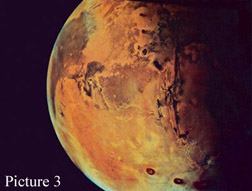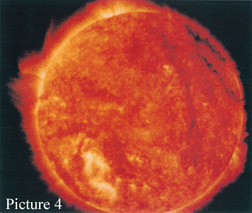Our solar system
This task is about the moon, the sun, Earth and Mars.
Here is a picture of the moon.

Here is a picture of planet Earth and a picture of planet Mars.
Scientists tell us that people like us cannot live on Mars but we know that we can live on planet Earth.


Here is a picture of the sun.


